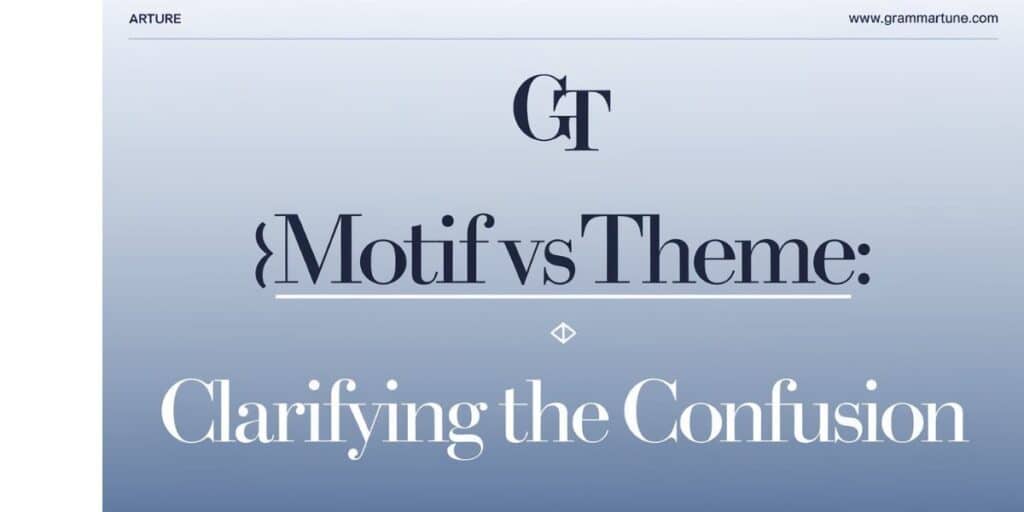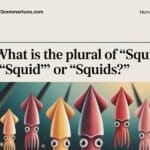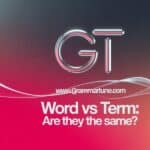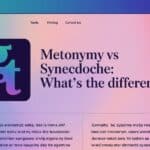In fact, the distinction between motif and theme causes confusion in even the most seasoned readers and writers. They pertain to important aspects of storytelling but serve different purposes.
While a motif concerns recurring items or patterns reinforcing deeper meaning, the theme refers to the message or central idea conveying the blueprint of the story to readers. A clear understanding of this difference above will serve to sharpen your analysis and understanding of literature for its enjoyment.
This article will take you deep into these concepts with their definitions and examples to further your understanding into their more effective grasp and use.
What is a Motif?
A motif can be said to represent a repetitive feature, symbol, or idea in a story. A motif can be an object, phrase, or any other image that is being reiterated more than once throughout the whole piece.
Thus, in conjunction with the already existing expressions of the repetition itself, the repetitions add understanding and significance to the whole story while emphasizing certain aspects of it.
Must read: ‘Forest’ or ‘Forrest’: Which is Correct?
Types of Motifs
Common motifs can be colors, seasons or actions in literature. The red color has for its motif of passion or danger. Identifying such motifs reveals within the story some hidden meanings.
What is a Theme?
A theme can actually be defined as the main idea or the message a story carries from one ear to another. The idea of the theme portrays the crux of the insight generated by the author about life or society. Unlike motifs, themes are generally abstract concepts that lend emotional and intellectual density to a story.
Types of Themes
There are many themes in the stories from love and friendship to good against evil. Some stories have complex themes such as identity, freedom, or sacrifice.
In each case, the theme draws the reader more deeply into the story and into contact with a more universal experience.
Motif vs Theme: The Differences
While motifs are elements that keep reappearing in the story, themes are those larger ideas represented by those elements.
Motifs can be thought of as symbols or patterns, while notions are larger ideas that symbolize. Understanding the difference makes your experience as a reader much richer.
Key Differentiators:
On the other hand, motifs being concrete and theme being abstract make it possible for the two to diverge. Whereas motifs reinforce thematic concerns through reiteration giving it a deeper meaning within the story, themes do not possess corporeal existence and hence cannot embody the very notions into tangible symbols.
Origins of Motif and Theme
Like motifs, themes also have a glorious antiquity from several storytelling traditions. Early works of literature used symbols and recurring things to put forward meaning. Though these elements have evolved, they still form the backbone of modern writings.
Origins of Motif
The story where repetition assisted in reinforcing key ideas was born in oral storytelling. Subsequently, the format was made symbolic and incorporated layers of meanings in the narrative and fortified the emotional weight of the story.
Origins of Theme
Themes have probably existed since the very inception of storytelling. Most ancient myths and legends explored such universal themes as morality, fate, and human nature. Indeed, such themes have permeated cultures and generations far and wide.
Examples of Motifs and Themes in Literature
Motifs and themes compel the narrative in all literature. For instance, journeys might stress the theme of self-discovery; together, they enhance the implications of the story for the reader.
Examples of Motifs:
Green lights are properties that are spelling indicators in “The Great Gatsby“; they lie between hope and dreams that are invariably unattainable.
Lightning, in turn, symbolizes power and conflict in “Harry Potter.” Again, these are motifs that carry the emotional tones of the story.
Examples of Themes:
Racial injustice is the theme that governs the whole story in “To Kill a Mockingbird.” In “1984,” the message is about surveillance and control. Given such intense themes, they really make for different kinds of reading experiences for every reader.
A Final Look at Motif vs Theme
The understanding of the difference between motif and theme is one that would add much more appreciation and value to literature.
As the two elements are used to complement and reinforce one another in constructing a stronger theme, distinctions between them lead to deeper and richer experiences. Recognition of both usually leads to the true meaning of any story.
Sources
Read, for instance, into the great traditional materials with regard to patterns and themes. It is often seen that scholars elaborate on their examples to better clarify the differences for these two major ingredients of storytelling.
Side-by-Side Comparison: Motif vs Theme
For a quick comparison, a motif is something recurring-a symbol or an idea-whereas a theme would be the larger lesson. Both are important aspects of storytelling, but a motif illuminates a theme. Understanding these deeper concepts creates a richer reading experience.
Identifying Central Themes
This process of theme-nothing is helpful in bringing out the core message. Themes are most often universal ideas, like love, loss, and identity. In that respect, they allow a reader to fathom deep meanings the author is trying to get across.
Strategies for Identifying Themes
Look for repetition in theme, ideas that are very similar in character actions, or dialogue of the same. Seek the way by which characters respond to events, then look into what the story is teaching or showing about life or society.
You will like: What is the Difference Between Realism and Naturalism in Literature?
Theme Development Through Literary Elements
Themes in literature are developed using various literary elements, such as character arc, plot structure, and symbolism in the aforementioned.
They are all combined to encode the story’s hidden meaning and guide readers toward a more complete understanding of that theme.
Character Development and Themes
Through character development, the theme is given life. Very often, the manner in which a character develops or reacts to a challenge will embody the theme of the story, be it growing up, redemption, or the consequences of choices.
Plot Structure and Themes
The very structure, or plot structure, of a narrative can affect how its themes unfold or develop. Events are not random happenings; they are constructed in such a way that they build on one another and then reveal the theme gradually to the audience. The important turning points highlight the main message in the story.
Setting and Themes
The cultural and geographical structures around the setting all collaborate to enforce the desired theme of the storyWhether we speak of George Orwell’s dystopia in “1984” or rather the calm, contemplative ambiance created in the setting of “Wuthering Heights,” the landscape becomes an additional dimensional space to accentuate the story’s meaning.
Symbolism and Themes
Symbolism affects theme exploration in interesting ways. An object, an action, or color can symbolize certain ideas, thus attributing deeper meanings to the narrative. A particular case is the red rose, a symbol of love, a subject generally seen in literature.
Significance of Recurring Motifs
Recurring motifs would fortify the theme by providing the reader with visual or emotional signposts. The repetitions bind the narrative together while consequently guiding the reader’s understanding somewhat, thus enriching the story’s shared interpretation with deeper meanings in a more cohesive manner.
Cohesion and Unity
For the theme of a story to be really affecting, all the elements must be in harmony: characters, plot, and setting. This creates a unity in the narrative making it seem as if the theme comes by itself rather than being forced or strung together.
Symbolism and Foreshadowing
The interplay between symbolism and foreshadowing serves to reinforce themes. Authors employ veiled hints and symbols to inform the reader about what will happen later; while doing so, they reiterate the main theme-whether it has to do with destiny, love, or the human condition.
Interpreting Themes and Character Development
As themes most frequently change the character, it is also during the journey of the character that the reader is enabled to understand how individuals confront societal or personal issues, thus offering additional insight into their stories.
Appreciating Authorial Craftsmanship
Themes understanding very finely display the manipulations of the author in all the ways. With the help of exact language, symbols, and fabricated points for the plot, the author effectively creates and weaves the theme into the mind of the readers so that they take part in thinking about the theme themselves.
Theme Comparisons Across Novels
By comparing themes in novels, one can elucidate the universal ideas explored by different authors. While some authors approach a theme appositely, their comparison reveals common concerns that cross time and culture-justice, say, or freedom, or identity.
Universal Themes, Unique Approaches
Different authors bring different spins to themes of universality. One work might discuss love with a romantic eye, while the other would tackle familial love. These take on the theme make that concept remain earnest.
Literary Elements and Theme Development
Literary elements like symbolism, foreshadowing, and conflict are integral in creating themes. They work together to facilitate and even amplify the theme, thus giving depth to the story while resonating its message with the audience.
Cultural, Historical, and Personal Contexts
The theme of a piece can be affected by culture, history, or personal events surrounding the text. Take for example stories told against the background of war; these may carry themes of sacrifice or survival. Grasping these contexts allows the reader to appreciate the theme on a different level.
Deepening Understanding and Appreciation
Read deeply critically to understand themes. Also, seek for something beyond the obvious. Examine the various literary elements’ contributions toward that theme and how they speak to your life or society.
You will like: What are Teaching Resources?
Key Terms to Review (18)
- Motif: Any element that appears again and again in a story to reinforce the main message thereof.
- Theme: The central idea or underlying meaning of a work of literature.
- Symbolism: The use of symbols to signify ideas and qualities by giving them symbolic meanings that are different from their literal sense.
- Foreshadowing: Suggestive preparations for an event in the future that usually build up suspense.
- Character Development: A process in which a character is developed or changes throughout the story.
- Plot: The arrangement of events within the storyline, which often supports a particular theme.
- Setting: The time and place wherein a story occurs, influencing the mood and themes of the narrative.
- Conflict: The opposition between forces in a story that serves to advance its plot and usually to emphasize its theme.
- Narrative Perspective: The perspective that the author uses to tell the story, which changes the presentation of the theme.
- Main character – Like all main characters, actions of the protagonist have ties to the theme.
- Antagonist – Any person or force working against the protagonist; often its actions illustrate the theme.
- Allegory – Story in which actual characters, events, or settings symbolize abstract ideas or moral qualities.
- Irony- An event in which something happens that is the opposite of what the expected outcomes are, emphasizing a theme.
- Allusion- Reference to literature, person, or event, adding depth to the text’s theme.
Theme: Tone is the author’s attitude toward the subject or audience, contributing to its thematic evocation.
- Mood: The emotional atmospherics created by the setting, tone, and events-all enhance and support the theme.
- Metaphor: A figure of speech that compares two unlike things to hide a deeper meaning in association with the theme.
- Climax: The point at which a story turns; when the central conflict reaches its peak, often linking to the theme’s resolution.
Conclusion
It is imperative to examine the disparity between motif and theme as crucial for analyzing works of literature. While a motif is defined as repeating items or elements that further emphasize the themes, the theme would refer to the work’s greater purpose or underlying thought.
Motifs and themes both heavily influence the construction and understanding of the story in relation to character and plot. With a clear understanding of how motifs and themes coexist, the reader will come to appreciate the construction and meaning of a given story on a far deeper level, enhancing the art of reading itself.
FAQ,S
What is the difference between motif and theme?
A motif involves repetitive events, an idea feathered upon, which might contribute or unify to form a particular story. The theme is the message or main point of that particular story.
How can I determine a theme in literature?
Check for patterns; character development; and significant occurrences that lead us to understand something deeper about the story.
Why are motifs significant?
Motifs force the theme by repetition, thus developing layers of meaning underlying the premise of the story.
Can one story have several themes?
Yes, many stories explore several themes, each of which would add complexity to the story.
How does the setting affect the theme?
The setting shapes the mood and ambiance of a story, sometimes emphasizing or supporting the story’s theme.

Joulia, a seasoned wordsmith and grammar enthusiast, brings over a decade of blogging expertise to Grammar Tune. With a keen eye for linguistic precision and a passion for making complex grammar concepts accessible, he has helped thousands of readers enhance their writing skills. His engaging teaching style and practical approach to language learning have made him a trusted voice in the online grammar community.







